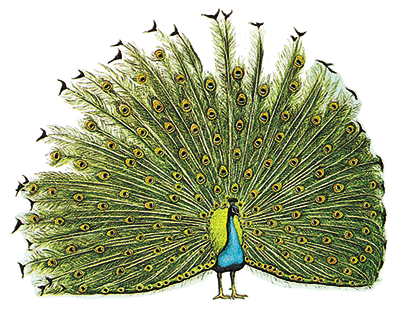Microevolution
Microevolution is defined as changes in the frequency of a gene in a population. These are subtle changes that can occur in very short periods of time, and may not be visible to a casual observer. Mathematically, we can determine whether microevolution is occuring by assessing whether a population is in Hardy-Weinberg Equilibrium.
The five "forces" that can cause shifts in gene frequency (microevolution) are:
- Natural Selection: when some genes are more beneficial than others to survival and/or reproduction, those genes tend to increase in frequency in the population over generations.
- Gene Flow (Migration): when there is mixing of genes from previously isolated populations that have diverged, this can rapidly change gene frequencies in the newly merged population.
- Mutation: when an advantageous mutation spontaneously arises in an organism, this mutated gene can increase in frequency over generations if it conveys an advantage over those who do not have it. If a neutral mutation (one that is neither beneficial nor harmful) arises in a population, it can increase in a population by genetic drift. If a deleterious mutation arises in an organism, it is likely to be selected against and will generally not increase in frequency. While recombination during meiosis can shuffle genes into new combinations, mutation is the only source of new genes.
- Genetic Drift (Bottlenecks, Founder Effects): In a small population, gene frequencies can change rapidly due to random events. For example, in a population of only 10 individuals, each one carries 10% of the genes. In a population of 100 individuals, each one carries only 1% of the genes. In a population of 1000 individuals, each one carries only 0.1% of the genes. If an accident happens to one individual in each of these populations, it is more likely to significantly change gene frequencies in the small population.

- Non-random Mating: With respect to the gene of interest, the population must be mating at random. If for example, white haired rabbits prefer to mate with other white haired rabbits, and brown haired rabbits prefer to mate with other brown haired rabbits, the population can fragment and gene frequencies within each sub-population would shift. Non-random mating is a special form of natural selection called sexual selection, which is performed by the members of a species on each other during mate choice. Some of the most extreme examples of sexual selection are in birds like the peafowl, where the females are drab and well camouflaged, but the males, who have to attract a female to mate with, put on elaborate displays and have incredibly colorful plumage. While this dramatic coloration may be good for their reproductive success, it can be a survival disadvantage. Such trade-offs can lead to interesting evolutionary compromises.